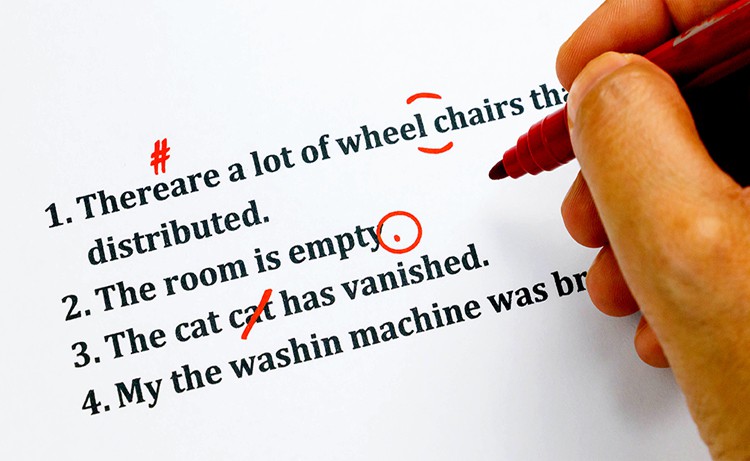In these days of digital editing, Google docs and MS Word’s Track Changes, it’s easy to think that traditional proofreading marks (or proof correction symbols) – those hieroglyphics that indicate corrections to the final proofs of a text before it goes to print – are a thing of the past.
No-one uses the marks any more, some say: they don’t get taught to editors or proofreaders, and writers and designers don’t know what they mean, anyway.
In fact, they are still taught, by professional bodies like the Chartered Institute of Editing and Proofreading (CIEP) and the Publishing Training Centre (PTC), and they are still used, if not as often as they used to be. For many proofreaders, they are still valuable tools of the trade.
What are proofreading marks?
In the UK, the most up-to-date BSi standard for UK proofreading marks* is BS 5261C (2005). The marks fall into three broad categories.
Deletion, insertion, substitution
The most common marks are those used to insert, substitute or delete letters or punctuation marks that are missing or incorrect.
They are handy for correcting simple things such as spelling errors (affect/effect), pairs of letters that need to be transposed (ie for ei), typing mistakes (intem/intern), or the the odd duplicated word (did you spot it?). Missing spaces betweenwords, or spaces that are too wide fall into this category too, as do missing ligatures (joined letters like æ), superscripts/subscripts and incorrect fonts.
Position
Proofreading includes dealing with problems of page layout – this is one of the areas where proofreading differs from copy-editing, in that proofreading, strictly speaking, is done on the final proofs of a text when the page layout has been finalised.
For example, text or numbers might be incorrectly aligned in a table; the page numbers could be in the wrong place; or a paragraph might be indented when it should be full out.
There are specific marks for these problems and, used correctly, they enable proofreaders to give concise, precise and unambiguous instructions for making corrections, which can be preferable to a wordy note to the typesetter.
General
The all-important ‘query’ mark (a question mark in a circle) comes under this heading, along with the solidus (/) that indicates the end of a particular correction.

Where do they go on the page?
Most errors get two marks, one in the exact position of the error itself and a corresponding one in the margin next to the line with the error, which draws the typesetter’s eye to the problem. Errors on the right half of a page are marked in the right margin, those on the left in the left margin.
Colour
Traditionally, marks are made in different colours to distinguish between errors made by the typesetter (red) and errors made by the copy-editor that the typesetter merely followed (blue). This enables the cost of correcting the errors to be charged appropriately – an important consideration, especially when a small correction might have the knock-on effect of changing the layout of a page.
Other types of instructions might be in green (oooh!), depending on the client. Queries are in pencil – removable when they are resolved.
Why are they still used?
Even though editing and proofreading are mostly done on screen these days, some jobs are still done on hard copy, and proofreading marks are the most efficient way of marking up on paper, even if that means sending a sheet of marks back to the client to explain what they all mean.
On-screen proofreading is often done using mark-up tools in the pdf software itself, but digital versions, or stamps, of the traditional proofreading marks are available for pdfs too, for those who prefer to use them (for example, Louise Harnby has created a complete set – see link below).
Some proofreaders like to print out a hard copy of the text they are working on and use the marks for their own benefit, even for an on-screen job, because they find errors when proofreading on paper that they don’t find when working on screen (there’s some science about the reason for this, but that’s another story).
Using the marks is a great discipline, an efficient practice, and a good deterrent against straying into editing when the brief is to proofread only. It’s also a great excuse for investing in gorgeous pens and pencils!
Do you require a professional proofreading company? While we do not have any need to use proofreading symbols, we proofread all forms of on-screen documents for businesses of all types, authors and students all over the world. Get in touch today if you would like a quote from one of the UK’s best proofreading companies.


Trackbacks/Pingbacks